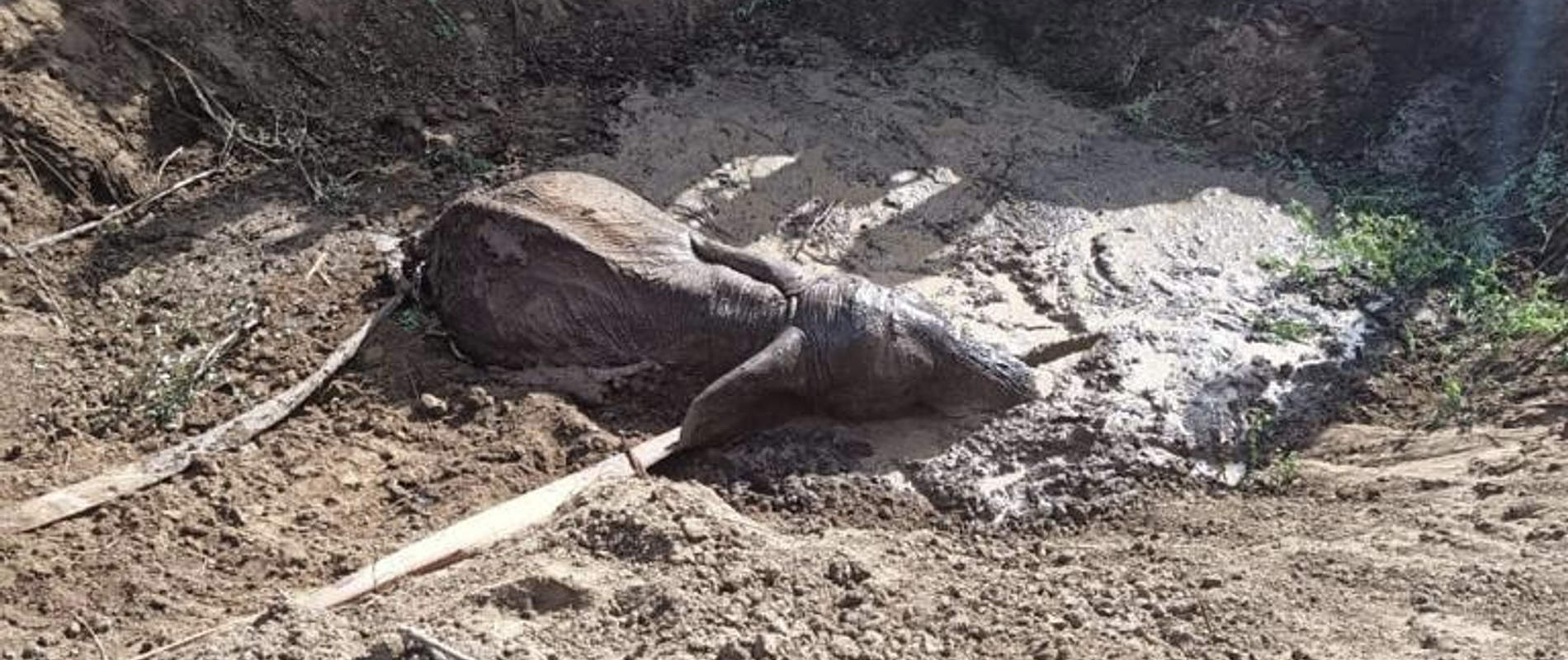If there is one certainty about saving elephants, it is that things rarely go according to plan. When Plan A doesn’t work, we create a Plan B. This herculean operation to free a trapped bull began with hands-on digging and ended with heavy machinery.
On the same day that Naleku, Sagateisa, and Suguroi took the next step in their reintegration journey, a wild elephant was fighting for his life. On the opposite side of Tsavo East, near the eastern boundary of the park, a bull fell into a deep well. The steep, muddy sides created a trap, leaving him hopelessly stuck within.

An adult elephant had fallen into a deep well
Upon discovering his plight on the morning of 17th January, local members of the community raised the alarm. Unfortunately, we are all-too-familiar with these types of rescue operations. Typically, it takes a persistent combination of manpower and horsepower to free an elephant of this size. Two SWT/KWS Anti-Poaching Teams responded to the scene, along with reinforcements from our Kaluku Field Headquarters. They had three Land Cruisers, which would be used to pull the elephant out with ropes.

The team pulled out all the stops to free him
Several exhausting hours later, however, the elephant still hadn’t budged. The depth and steepness of the well, coupled with the not-insignificant body within, created an impossible situation. The team tried everything, even clambering inside and digging by hand, but he remained discouragingly stuck.

But even a three-vehicle caravan was no match for the steep, slippery well
It was time to get creative. The following day, we sent a low loader to pick up our JCB backhoe from Kaluku. This excavator has already proven its worth within the park, from road works to conservation projects, but this would be a new application.

By the end of Day One, the elephant remained discouragingly stuck
Getting the JCB to such a far-flung, remote area of Tsavo was no small task. It could never make the journey itself, which is why the low loader was brought in. Once the excavator was secured, the convoy embarked on a nearly 100-kilometre odyssey to reach the elephant. It was slow going — Tsavo roads are not designed for heavy machinery — but they made good time, considering the terrain.

It was time to create a Plan B
At last, the convoy arrived at the elephant’s side — and not a moment too soon. After more than 24 hours stuck in his mudd, he was starting to lose steam. The window to save him was closing by the minute.

Our JCB was brought over from Kaluku and dug out a ramp
Fortunately, the JCB made quick work of the rescue. With a few swift digs, it created a ramp up one side of the well. However, it was still quite steep, so the elephant needed a helping hand. The JCB arm provided this, giving it a sturdy push up the ramp. At last, the bull found his footing and was able to clamber the west of the way to freedom. He was a bit wobbly from all his time recumbent, but he soon came to his senses. Everyone felt an enormous sense of relief when he took off into the bush.

With an exit created, the elephant got to his feet — free at last
This elephant’s story could very well have ended at the bottom of a well. Thanks to teamwork, tenacity, and some serious thinking outside the box, he now has his whole life ahead of him. Supporters allow us to rise to these field challenges again and again, forging a future for our giant neighbours.
